Most log cabin owners concentrate their planning from the floor up. What about under the cabin? Basements are great but they are expensive and many times underutilized. Building too close to the ground doesn’t allow much room to work under the cabin.
A good compromise is creating a crawl space under your cabin. A survey conducted by the National Association of Home Builders revealed that 14% of newly built single-family homes contain crawl spaces. Building codes allow for both vented and unvented spaces as long as they comply with code requirements.
Crawl spaces have both pros and cons you should consider. They should be constructed to allow easy access and enough room to move around. They should be protected from moisture and pests and equipped with a dehumidifier when required. You will not be sorry for creating your crawl space with the best practices and building codes used today.
Log Cabin Crawl Space Pros
An adequate crawl space allows enough room to house and work on plumbing, wiring, HVAC ducts and equipment, and repairs. Crawl spaces provide these useful benefits:
- They are budget friendly because they are much less expensive than a basement
- Makes repair work under the house easier than a slab foundation
- You can easily add more pipes or electrical wiring as needed
- Avoid moisture and critter problems that can exist with basements
- Provides a layer of protection under a cabin in addition to insulation
- Creates a good foundation for areas that flood or experience earthquakes
A foundation with a crawl space can support a cabin just as well as one with a basement. It is strong and durable enough to last for generations. You should also consider the cons of a crawl space under your cabin.
Log Cabin Crawl Space Cons
Like a basement, a crawl space has its disadvantages you should weigh against its advantages. Some factors that enter your decision are the size of a cabin, the heating and cooling system, on or off-grid, and your climate. The major cons of crawl spaces include:
- Less protection for pipes, wiring, and ducts than a basement
- Moisture problems can arise unless well encapsulated
- No go-to place like a basement during extreme storms
- Less storage space than basements
- Can cost more to heat a cabin during the winter months
- Most people forget about crawl spaces and overlook possible issues in them
Crawl spaces can provide areas for pests or insects to inhabit unless properly sealed. If you think the pros outweigh the cons, it is time to make some plans.
Crawl spaces have both pros and cons you should consider. You will not be sorry for creating your crawl space with the best practices and building codes used today.
Crawl Space Height and Construction
A crawl space is part of a foundation structure found in many styles and floor plans of log cabins. You should obtain professional advice to ensure it a correct choice for your climate and soil conditions. Do not attempt to cut corners on this part of your log cabin.
Crawl spaces should meet the code requirements for your area. They must have an access door that is easy to enter and exit in case of emergencies and repairs. In most cases, the minimum entry door size is 18” high and 24” wide. The overall height of a crawl space should be at least 18” and up to 44” when HVAC equipment is under or partially under the floor.
Covering the Perimeter of a Crawl Space
A crawl space should be enclosed for protection against the elements and pests. The walls are generally made with one of these materials:
- Concrete blocks
- Insulated blocks
- Poured concrete
Any of these wall materials can be faced with brick, stone, plaster, or another skirting material.
Perforated pipe and gravel are used in a trench around a crawl space to route the water away. Crawl spaces should be encapsulated by wrapping a water vapor usually made of heavy-duty polyethylene barrier on the floors and walls. This method creates a clean and dry capsule that keeps ground moisture from entering the space.
Other Log Cabin Crawl Space Considerations
After the crawl space is properly sealed, you should check the moisture levels at different seasons of the year. If the moisture levels are too high, install a dehumidifier to bring them to an acceptable level. Be sure to determine the correct type and size of dehumidifier.
Building codes typically require crawl spaces to have outdoor ventilation between the floor joists and the ground. If you want a vented crawl space, you need vents on all the walls. The recommended size of vents is one square foot for every 500 square feet of space. Another code requires one vent for every 1,500 square feet when there is a class 1 vapor barrier that contains a 6-mil thick sheet of polyethylene.
We hope these ideas will help with choosing to create a crawl space. Building with pine or cedar log siding and trim is a smart way to save money over building with full logs.


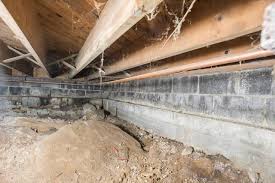
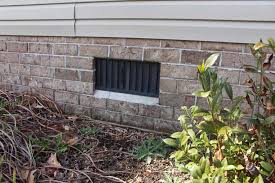
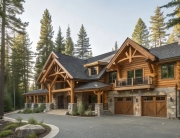
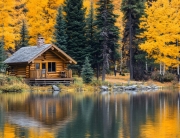
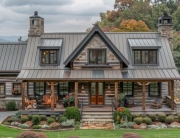
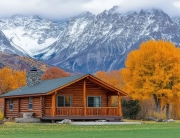
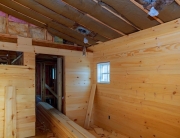
Recent Comments